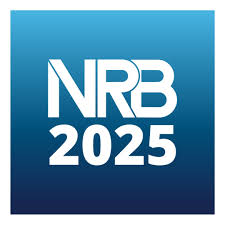
Did you watch the U.S. Congressional Hearings in Washington on January 31, 2024 concerning the lack of safety mechanisms on social media platforms for children? CEOs of Meta (notably Mark Zuckerberg), TikTok, Snapchat, Discord, X and others were called on to testify before the Senate Judiciary Committee about the exposure of inappropriate adult material to children. This occurred because of pending legislation in Congress called KOSA (Kids Online Safety Act). DA:NCE Awareness feels strongly that this legislation must be passed. What does KOSA do and why must it be passed? Let’s discuss and also explore how this is all tied back to the dance industry.
KOSA was created to foster a safer and healthier environment for children online in 3 ways:
1. Duty of Care-It mandates platforms to responsibly design their products to ensure children are protected and not exposed to harmful content.
2. Safeguards and tools- It creates an obligation for platforms to provide safeguards for children and tools for parents to assist and monitor their children’s activity. It would limit unrelated adults from contacting minors and creates a legal obligation to provide a reporting mechanism when children are, or could be, harmed.
3. Transparency- Platforms will be required to participate in audits of harms, corporate response and effectiveness.
Protecting children is a bipartisan concern for caring adults. All of us need to support this legislation. (Source)
This is not a new issue for DA:NCE. For several years, DA:NCE has signed organizational petitions alerting congress to internet safety issues for children. The hitch? Some of you might ask what this issue has to do with children’s dance? The answer is that there is a connection between child trafficking, child prostitution, and children’s dance related to the internet, media and porn industry. You may not fully understand it yet, but grooming children through exposure to adult sexuality in trafficking, prostitution and dance overlap and reinforce one another. It’s an awful connection that distorts the beauty of healthy dance with an unregulated internet.
Friends, let’s dive into the weeds to understand the connecting links. Children proudly upload their own hypersexualized dance videos(which many unaware, uneducated parents and dance studios allow) in adult costumes, choreography and music. They do this on a multitude of social media platforms. This creates the underbelly of hypersexualized children’s dance on the internet and affects costume, choreography and music choices in the dance studio. Sexual material for children has been normalized by our culture and adults have accepted this flow of content even though the research shows it is harmful. Our youngest citizens have also been influenced by the explosion of inappropriate adult sexual material they are exposed to in movies, magazines, ads, the internet and streaming services. Research also shows traumatic psychological outcomes for young developing brains that are exposed to adult sexuality before they know what they are seeing or doing. (Source)
And the problems go deeper. Predators often upload hypersexualized children’s dance videos to online porn sites to share these dances without permission. Sometimes predators contact a child from a social media platform(no filters so it’s easy to do this) and begin to groom them for additional sexual content without parental consent.
“I don’t believe that children have the available resources, the knowledge, the wisdom to be able to prevent a predator from approaching them.” –John Doe, convicted internet predator
“When we encounter the darkness of our world too early in life, we are often traumatized by it” —Dr. Anne Redelfs, Expert on Trauma
That’s why DA:NCE is an active participant in educating caring adults to stop this harmful trend with congressional legislation that will provide accountability to the internet, media and porn industries. To engage you with up-to-date information on why this legislation is so important, take some time to listen to a briefing I attended the day before the congressional hearings.
In that briefing, I heard testimony from experts that the CEO’s from social media platforms reported that it’s too difficult to monitor age-appropriate materials for children; briefing experts related that this message is all smoke and mirrors. Actually, it’s easy to verify the age of a child on social media platforms. They already have the technology to do this. They just don’t do it because they’re making gobs of money without filters. Children are not protected as they should be because there is no regulation online of any kind. This lack of oversight began in 1996 when Congress passed the Communications Decency Act which opened the doors to no regulation for the fledgling internet industry. Who would have guessed that 30+ years later, the internet industry controls the communication power of every culture on the planet? What other industry has had the freedom to expand without oversight of any kind? And finally, is the lack of regulation making the world better for children?
This question actually reminds me about the lack of regulation in children’s dance. Did you know that there is free access for any adult to work with children in a dance studio without background checks, training, or educational degrees? Sports activities, scouts, churches and other organizations who work with children all have background checks and rules to follow so that they ensure a child’s safety. But not dance. That’s another tsunami for me to share at a later time.
The bottom line? It’s time for caring adults to blow the whistle on internet injustice and then consider the importance of regulating adults who work in dance studios so that children are protected and loved, not harmed and abused.



